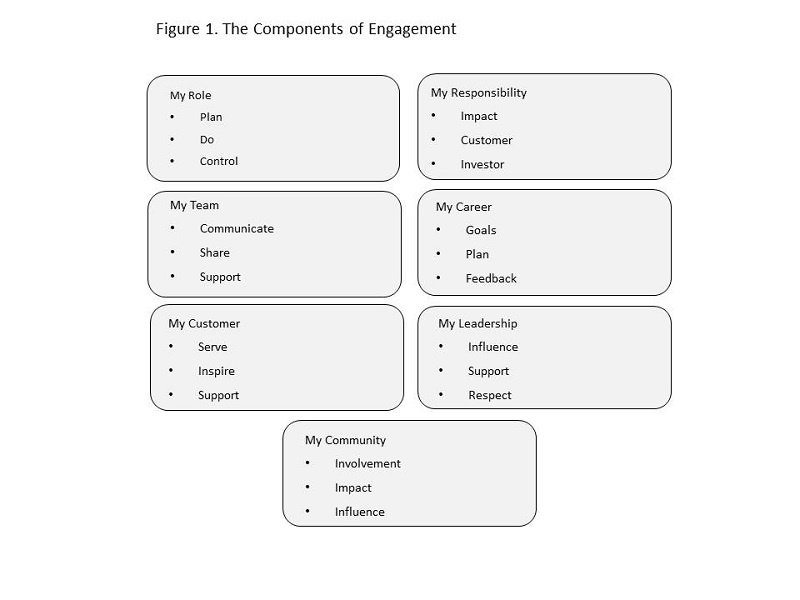ATD Blog
Case Study: Measuring ROI in Employee Engagement with a Broad Focus
Tue Apr 19 2016

A large chain of home furnishing stores with popular brands was pushing for more growth, increased profitability, and improved talent performance. Although the chain was very successful, top executives and the HR team believed that even better performance was possible, particularly if employees were more engaged.
Company execs pushed the concept of engagement beyond just being involved with daily work, but also being engaged with customers and the community. With this broader definition of engagement, the company embarked on a comprehensive revised employee engagement program. A combination of making adjustments in responsibilities; changing the definition of engagement; and harnessing the creativity, experience, and smart thinking of employees made this program a success.
What’s more, a main focus of this engagement initiative was to push ownership of engagement to the employees (see Figure 1). Fortunately, employees also wanted to improve the engagement measures. They took ownership of the program, as they connected engagement practices to essential business measures.

Initiative leaders developed a new engagement survey instrument to learn more, and store managers became increasingly involved. Based on all the input, the company conducted workshops for both the employees and managers, rolled out e-learning support that focused on seven components of engagement, and delivered online support to keep the program on track.
The total monetary benefits were $1,386,024; compare this figure to $446,603—the total costs of developing and rolling out the program. The bottom line was a very impressive ROI of 210 percent. In other words, for every dollar invested in this program, $2.10 was returned after the dollar is recovered.
This brief case study attempts to take some of the mystery out of measuring the success of engagement, particularly when pushing measurement to the impact and ROI levels. This is the ultimate level of evaluation for executives—where they can clearly see the return on their investments in this important area.
More details on the background, methodology, and case study examples are in ATD’s new book, Measuring the Success of Employee Engagement: A Step-by-Step Guide for Measuring the Impact and Calculating the ROI.
